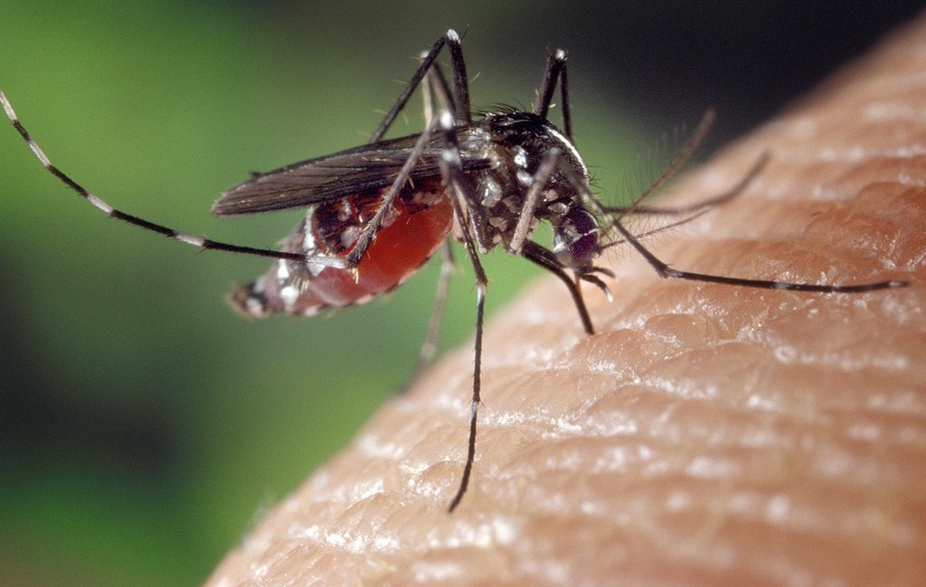Seleção de cepas de Bacillus thuringensis Berliner para o controle de Aedes aegypti Linnaeus
DOI:
https://doi.org/10.20873/jbb.uft.cemaf.v4n1.meloKeywords:
controle de vetores, bioensaio, endotoxina, SDS-PAGEAbstract
The present study aimed to select strains of Bacillus thuringiensis with insecticidal activity against Aedes aegypti. It was tested sixteen strains of bacteria, isolated from Paraná state, Brazil, that were used in laboratory assays with mosquito larvae. Tests were carried out in two stages, first one to select the most efficient strains (screening) and second to estimate LC50. The protein profile of the highest toxicity of strain was obtained by SDS-PAGE (sodium dodecyl sulfate polyacrylamide gel electrophoresis). The best performance of larval mortality was produced by BR-01 strain, which 96.7% mortality rate, significantly higher than others. In the second part, there was obtained a LC50 of 9.07 µL.L-1 fermented extract. The protein profile revealed many peptides between 15 and 140kDa, similar to that reported in Bacillus thuringiensis ser. israelensis strains which high toxicity to mosquito species.
References
ABBOTT WS. A method of computing the effectiveness of an insecticide. Journal of Economic Entomology, v.18, n. 2, p.265-267, 1925
BARRETO ML, TEIXEIRA MG. Dengue no Brasil: situação epidemiológica e contribuições para uma agenda de pesquisa. Revista Estudos Avançados, v. 22, n. 64, p. 53-72, 2008.
BENINTENDE G, LÓPEZ-MEZA J, COZZI J, IBARRA J. Novel nontoxic isolates of Bacillus thuringiensis. Letters in Applied Microbiology, v. 29, n. 3, p. 151-5, 1999.
BRAVO A, GILL SS, SOBERON M. Mode of action of Bacillus thuringiensis toxins and their potential for insect control. Toxicon, v. 49, n. 4, p. 423-435, 2007.
BRAVO A, LIKITVIVATANAVONG S, GILL S & SOBERÓN M. Bacillus thuringiensis: a story of a successful bioinsecticide. Insect Biochemistry and Molecular Biology, v. 41, n. 7, p. 423-431, 2011.
CONSOLI RAGB, LOURENÇO-DE-OLIVEIRA R. Principais mosquitos de importância sanitária no Brasil. Editora Fiocruz, Rio de Janeiro, RJ, p. 228, 1994.
FEDERICI BA, PARK HW, BIDESHI DK. Overview of the Basic Biology of Bacillus thuringiensis with Emphasis on Genetic Engineering of Bacterial Larvicides for Mosquito Control. Open Toxinology Journal, v.3, p. 83- 100, 2010.
LAEMMLI UK. Cleavage of structural proteins during the assembly of the head of bacteriophage T4. Nature, London. v. 227, n. 5259, p. 680-685, 1970.
GUERCHICOFF A, DELECLUSE A, RUBINSTEIN C P. The Bacillus thuringiensis cyt genes for hemolytic endotoxins constitute a gene family. Applied and Environmental Microbiology, v. 67, n. 3, p. 1090–1096, 2001.
MELO ALA, SANCHUKI CE, WOICIECHOWSKI AL, THOMAZ-SOCCOL V, SOCCOL CR. Utilização da cama de frango em meio de cultivo de Bacillus thuringiensis var. israelensis Berliner para o controle de Aedes aegypti Linnaeus. Journal of Biotechnology and Biodiversity, v. 2, n. 4, p. 1-6, 2011.
RABINOVITCH L, CAVADOS CFC, LIMA MM. Dos Bacillus entomopatogênicos, o que se espera? Biotecnologia, Ciência e Desenvolvimento, v. 6, n. 6, p. 40-41, 1998.
ROH JY, PARK HW, JIN BR, KIM HS, YU YM, KANG SK. Characterization of novel non-toxic Bacillus thuringiensis isolated from Korea. Letters in Applied Microbiology, v. 23, n. 4, p. 249-252, 1996.
SAMBROOK J, FRITSCH EF, MANIATIS T. Molecular Cloning: A Laboratory Manual, 2nd ed., Cold Spring Harbor Laboratory Press. New York, p. 1626, 1989.
USEPA. Trimmed spearman-karber (TSK) program version 1.5 ecological monitoring research division. Environmental Monitoring Systems Laboratory, USEPA, Cincinnati, OH, 1990.
WHO. Guidelines for laboratory and field testing of mosquito larvicides. (Document WHO/CDS/WHOPES/GCDPP/13, Geneva, Switzerland, World Health Organization), 2005.

Published
How to Cite
Issue
Section
License
Copyright (c) 2024 - Journal of Biotechnology and Biodiversity

This work is licensed under a Creative Commons Attribution 4.0 International License.
Authors who publish with this journal agree to the following terms:
Authors retain copyright and grant the journal right of first publication with the work simultaneously licensed under a Creative Commons Attribution License (CC BY 4.0 at http://creativecommons.org/licenses/by/4.0/) that allows others to share the work with an acknowledgement of the work's authorship and initial publication in this journal.
Authors are able to enter into separate, additional contractual arrangements for the non-exclusive distribution of the journal's published version of the work (e.g., post it to an institutional repository or publish it in a book), with an acknowledgement of its initial publication in this journal.
Authors are permitted and encouraged to post their work online (e.g. in institutional repositories or on their website) prior to and during the submission process, as it can lead to productive exchanges, as well as earlier and greater citation of published work (Available at The Effect of Open Access, at http://opcit.eprints.org/oacitation-biblio.html).


